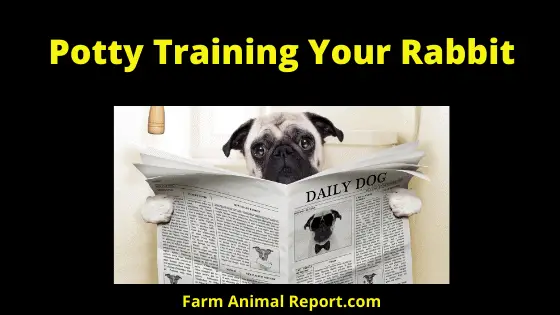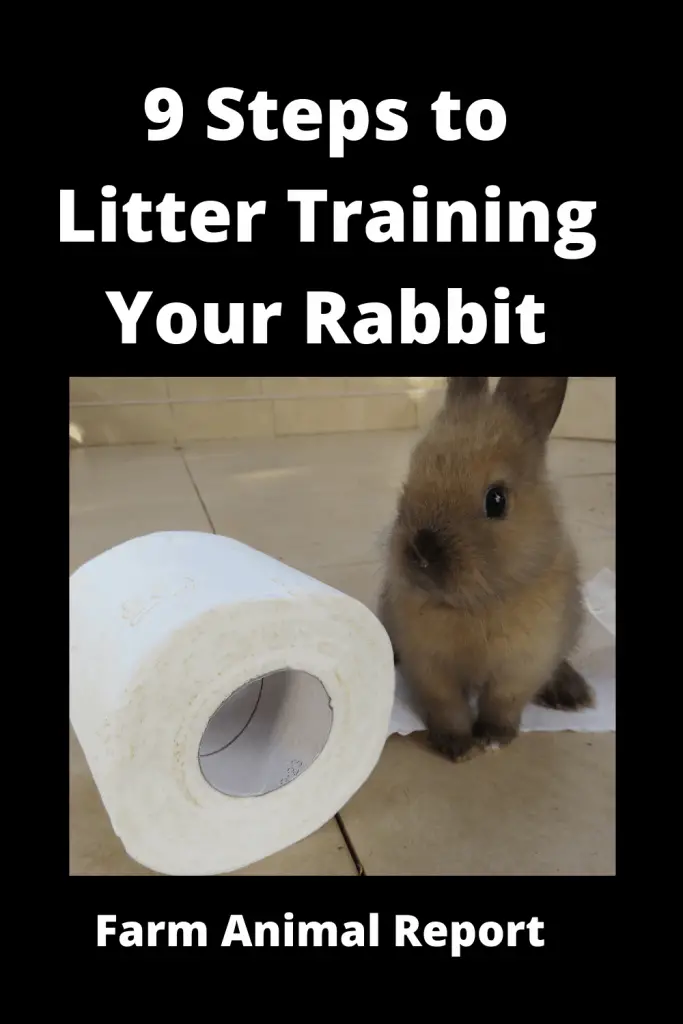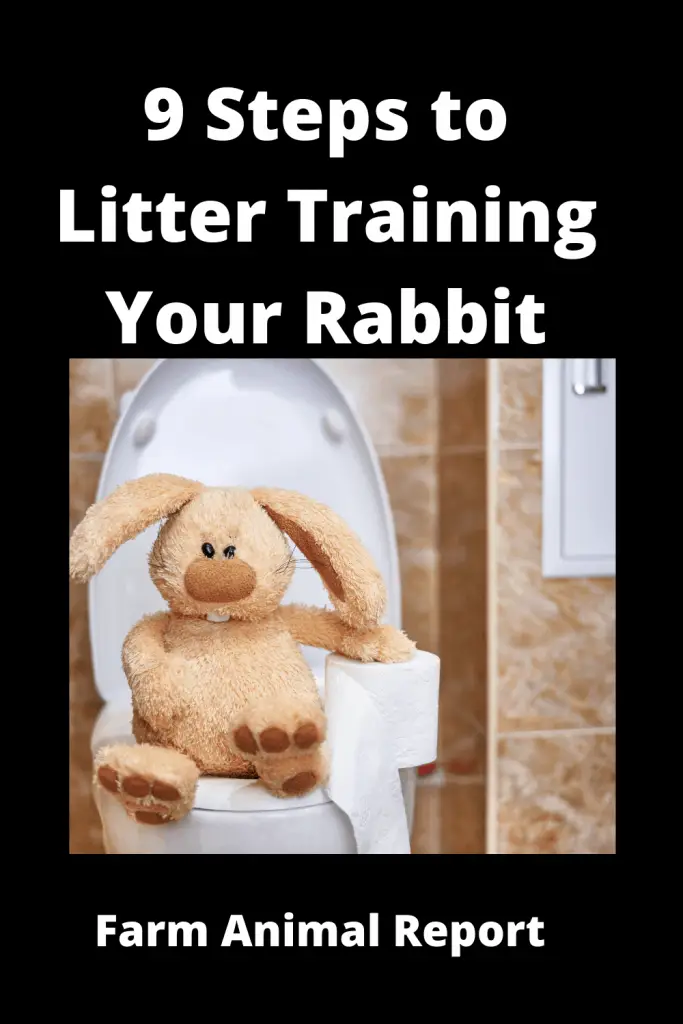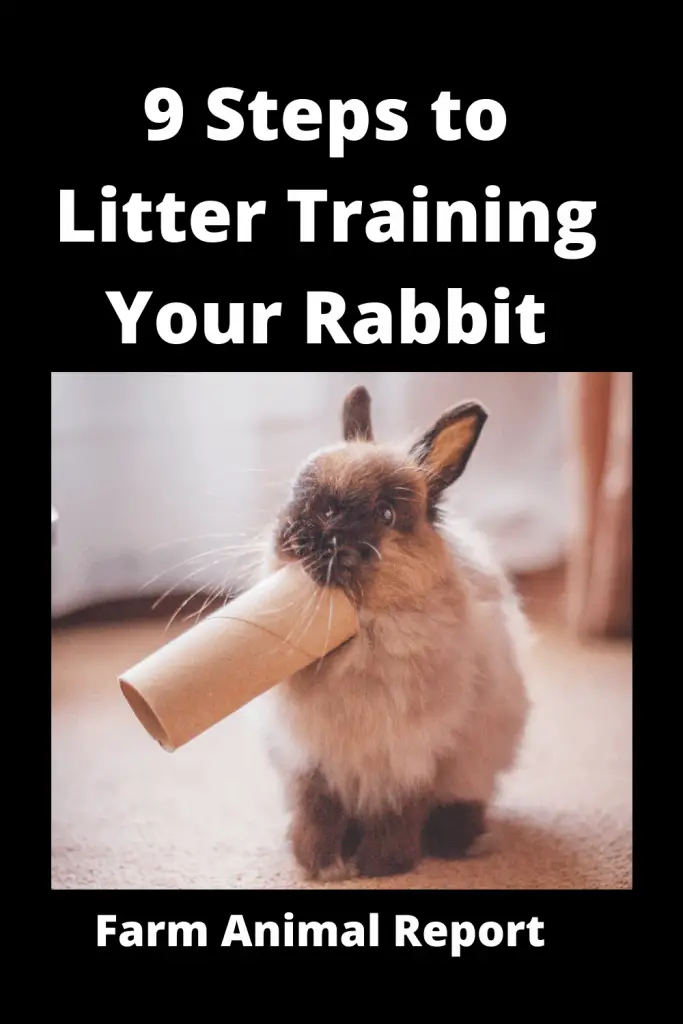As a general rule pet rabbits can be litter trained. It takes time and persistence and most can be Potty Trained. Rabbits are naturally clean animals, and training a rabbit to use a litter tray is not as difficult as you might think. Most adult, desexed rabbits will pick one spot to urinate and defecate. So, in most cases all you need to do is put a litter box there.
How to Litter Train a Rabbit
Litter Training Your Rabbit. Want to let your new rabbit hop around the house, but are worried about finding the little pellets everywhere? Don’t worry. Rabbits are naturally clean animals, and training a rabbit to use a litter tray is not as difficult as you might think. Just gather your supplies, set up the litter tray, and train your rabbit to use it. It comes easily to most rabbits. In fact, most adult, desexed rabbits will pick one spot to urinate and defecate. So, in most cases all you need to do is put a litter box there.
Gathering Supplies:
1. Purchase a Litter Pan
How to Litter Train a Rabbit – Pans/trays/boxes designed for rabbits have a raised back( to prevent litter flying everywhere when they scrape) and a low front (to make it easier for the rabbit to hop in). You may want to purchase several pans or trays so that you can eventually disperse them around the house and easily swap them out when cleaning and disinfecting the litter pans.
You don’t have to use a special rabbit tray. A regular cat litter tray with lower sides is fine, or even a shallow cardboard box (but be prepared to replace it regularly as it will get chewed).
2. Have a Newspaper Handy
You can also Read our Guide –18 Ways to Make Money by Rabbit Farming—Extensive Guidelines for Rabbit Farmers
Use it to line the bottom of the tray, which will make it easier to clean the pan out.
Most newspapers now use soy-based ink, which is not toxic for rabbits, but always check before using it. Newspaper ink can also rub off onto your rabbit’s coat, turning it black or gray.
3. Get the Right Litter: Use Special Toilet Paper
What types of litter should you use? It depends on what’s available in your area and what your rabbit’s habits are. Keep in mind the following as you choose your litter:
- Most rabbits spend lots of time in their litter boxes.
- Rabbits will always nibble some of the litter
- Rabbit urine has a very strong odor.
House Rabbit Society recommends organic litters, made from alfalfa, oat, citrus, or paper.
Stay away from litters made from softwoods, like pine or cedar shavings or chips, as these products are thought to cause liver damage in rabbits who use them
. Wheat scoop litter should be avoided because rabbits will often ingest it. Because it is comprised of wheat, it is very high in carbohydrates and can cause obesity, excessive cecal production, diarrhea, bacterial imbalance, and other health issues.
Another approach is to place a handful of hay in each box or to simply use hay as litter. It is helpful to put several layers of newspaper under the hay, to absorb urine so that your rabbit is not standing in the urine.
The most newspaper today are using soy-based ink, which is safe for your rabbit, but check with your local newspaper to make sure first. Obviously, you need to change the hay fairly frequently (daily), since your rabbit will be eating it. This method often helps to encourage good litter habits as well as to encourage hay consumption, since rabbits often eat at or near the same time as they use the litter box.
Pros and cons of the various types of litter include:
- Clay litter is dusty. If your bunny is a digger, the dust can make her vulnerable to pneumonia.
- The deodorant crystals in some clay litters are toxic.
- Clumping litters will clump inside the rabbit’s digestive and respiratory tracts (the latter if they manage to make enough dust to breathe) causing serious problems and often leading to death.
- Pine and cedar shavings emit gases that cause liver damage when breathed by the bunny.
- Corn cob litter isn’t absorbent and doesn’t control odor, and has the risk of being eaten and casing a lethal blockage.
- Oat and alfalfa-based litters have excellent odor-controlling qualities, but if a rabbit eats too much, they expand and cause bloating; these, too, can be added, with the bunny’s waste, to compost.
4. Buy a Cage
The cage should be three to six times the length of the rabbit. The first step of training is to restrict your rabbit to a cage with food, water, and a hide in one half, and the litter tray in the other.
The restricted space encourages your rabbit to not soil her living area and toilet in the tray.5. Get Good Quality Hay
Use hay to attract the rabbit to the litter box. Rabbits frequently like to munch on a snack while toileting, so this will encourage her to use the space. Snacks while seated on the Throne…Smile
6. Purchase a Litter Scoop and Disinfectant
You will scoop out litter soiled with urine on a daily basis. The whole tray needs disinfecting at least once a week. Use a commercial disinfectant designed specifically for small animals.
Setting up the Litter Tray and Cage:
1. Place a Few Pellets in the Tray:
Collect up some of the rabbit’s pellets and drop them into the tray.
2. Prepare the Litter Box
Line the bottom of the litter tray with a sheet of folded up newspaper. Cover the newspaper with approximately one inch of litter. Rabbits do not bury the litter tray. This places some of the rabbit’s scent in the box which gives her the idea it’s the right place to toilet.
3. Set up the Litter Box in the Cage:
Place the litter tray at one end of the cage and scatter some fresh hay in the tray, or attach a rabbit hay rack to the end of the cage where the tray is located. Rabbits like to eat as they toilet, so some tasty hay will attract her attention and encourage her over.
4. Set up a Bedding and Food Station in the Cage
Put bedding at the other side of the cage and set up her food, water, and a hide. This will give her somewhere to hide and feel secure.
5. Place Litter Boxes in other Areas of the House
Put out several boxes in areas your rabbit spends time or exercises in. the more litter boxes you have, the more likely it is the rabbit will use one of them.
Before introducing your bunny to the litter box for the first time, watch it and pay attention to where it does its business. Typically, it will be the back corner. Once you have established your bunny’s preferred area, place a box in that spot.
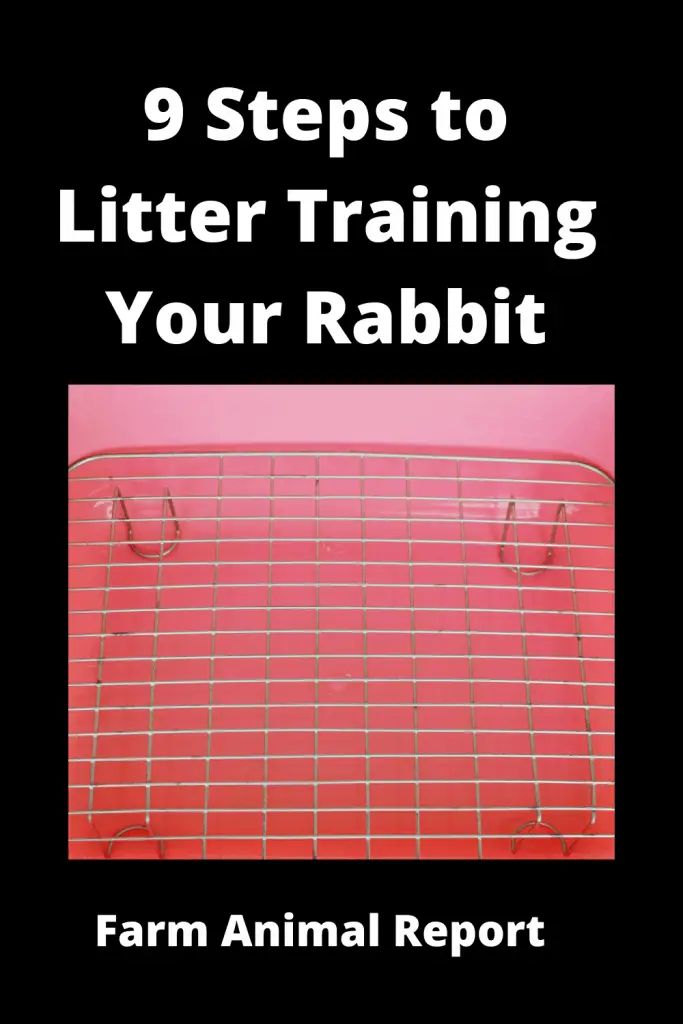
Training your rabbit:
1. Begin Training your New Rabbit as Soon as you Bring Her Home
Adult rabbits learn more quickly than immature rabbits (under 4months of age). However, it’s never too early to start litter training. Make a tray available as soon as you bring a new rabbit home, and start to teach her how to use it. Just be patient and she will eventually learn.
- Most desexed adult rabbits will defecate and urinate in one corner, so you only need to place their litter box in their toilet corner.
- Starting out, when she toilets outside the litter tray, scoop up the pellets and put them in the tray as a hint as to where to go.
2. Consider Spaying or Neutering your Rabbit:
Un-neutered adult rabbits are more territorial and they use their scent to claim space. This involves depositing urine and pellets around the house, using scent as a territory marker. Getting your rabbit neutered will make it much easier to litter train her because her need to be territorial is vastly reduced.
3. Teach your Rabbit to use the Litter Bx in her Cage
At first, it helps to restrict the rabbit to the cage with the tray, so that the rabbit learns not to soil the eating and sleeping area. It only takes a couple of days to teach once the rabbit understands this, you can start letting the rabbit out.
4. Let Your Rabbit Out of Her Cage for a Brief Period of Time
When you allow her out exercise, if she squats to the toilet, gently pick her up and place her in the litter box that’s in her cage. A sign the rabbit is about to eliminate is that she raises her tail in the air slightly. You need to be vigilant for this, but it does help if you can catch her in time.
In the early stages of training, do not let her out for more than ten minutes at a time, and do not leave her.
Unsupervised in a room (you want to catch her before she toilets). Once she is using a tray regularly, you can relax your vigilance and let her have more freedom.
5. Congratulate Your Rabbit for using the Litter Box
Never shout or get angry with your rabbit if she doesn’t use one of her litter boxes. Rabbits don’t learn this way. Positive reinforcement is a much better teacher.
Offer a little treat, such as a bite of apple or carrot, immediately after she uses her litter box. This will reinforce a positive connection between toileting and the box.
6. Adjust the number of the litter box:
Once your rabbit starts using litter trays reliably, you can alter the number or position of them as needed.
For example, if your rabbit only uses two litter boxes and ignores the others, the extras can be removed. If your rabbit ignores one litter box, but urinates in a corner three feet away, move the litter box to the corner.
Cleaning the Tray and Dealing with Accidents: Teaching him To Flush
1. Spot Clean the Tray:
Once a day, scoop out litter soiled with urine. It’s fine to leave pellets behind for a day or so as they act as scent markers for the rabbit to go back to.
2. Don’t Remove all of the Pellets from a Dirty Tray
When cleaning the litter tray, keep an eye out for large, moist-looking pellets, which are made up of half-digested food. Leave them in the tray for the rabbit to re-eat and get vital nutrients. Without these pellets, your rabbit could suffer from gastric disturbance and diarrhea, and in the long term, dietary deficiencies.
3. Complete Clean the Litter Box:
Once a week, completely empty the tray and clean it. Simply dump the entire contents into a plastic bag, tie it off well, and throw it in the trash. Clean the tray with a disinfectant, rinse well, and allow it to dry. Then remake the tray newspaper and litter.
Vet clinics or pet stores sell disinfectants that are safe for use around pets.
4. Clean up After Accidents
Accept the accident for what it is, and then clean the area well so she doesn’t continue to the toilet in the wrong place. Use a solution of biological washing powder and work it in well with a clean cloth or sponge. Then rinse with clean water.
- Do not yell at or punish your rabbit. Rabbits do not learn anything through punishment, other than to be fearful of the person doing the chastising.
- When getting rid of a mess, always test the carpet for colorfastness first.
5. Get Rid of any Lingering Smell:
Work a solution of baking soda into the carpet, then rinse with clean water. If the surface is smooth, such as tiles or lino, finish by wiping it over with surgical spirit.
Do not use cleaning products that contain bleach. It contains ammonia, a component of urine, and can actually strengthen the smell of urine.
What are the Most Common Litter Training Mistakes?
- Letting the bunny out of the cage and not watching her with undivided attention; you can’t watch TV or read the paper or knit or talk on the phone and expect to keep your mind on what the bunny is doing every second if she urinates without being “caught” and herded to the litter box, she’ll be that much slower in learning what she’s supposed to do.
- Getting in a hurry. Bunnies take time. Perhaps that’s one of their special gifts to us in this hectic world. They require that we take time out to sit and watch and do nothing else.
Rabbit Breeder Associations
| Rabbit Association | Location | Link |
|---|---|---|
| American Breeders Association | United States | ARBA |
| House Rabbit Society | California | HRS |
| Ohio States Rabbit Breeders Association | Ohio | OSRBA |
| Livestock Conservancy | North Carolina | LC |
| Rabbit Welfare Association and Fund | United Kingdom | RWA |
| British Rabbit Council | United Kingdom | BRC |
| European Association of Rabbits.... | Europe | EAP |
| Australian National Rabbit Council | Australia | ANRC |
| Australian Rabbit House Society | Australia | ARHS |
| ARBA - Rabbit Shows | United States | ARBA - Shows |


